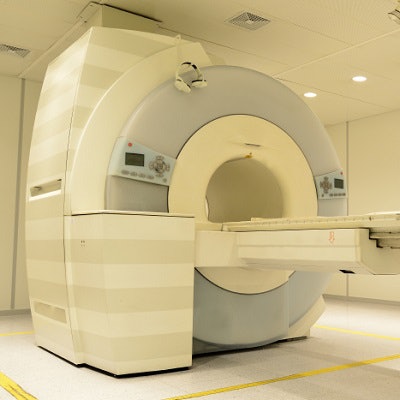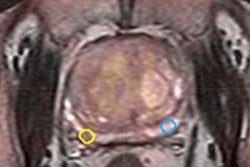
Designating a staff member to serve as a director of prostate imaging can greatly improve the quality of prostate MRI scans, according to a study by Canadian researchers published online June 10 in the American Journal of Roentgenology.
After providing constructive ways to improve the performance of multiparametric MRI (mpMRI), the researchers found that their director brought all five scanners at outside referral imaging centers up to speed with technical specifications of the Prostate Imaging and Data Reporting System Version 2 (PI-RADS v2).
"Our results are important given the expected widespread distribution of prostate mpMRI outside of specialized referral centers for prostate cancer as healthcare systems adapt to the expected marked increased use of prostate mpMRI before biopsy given the recent favorable results of [previous] trials," wrote lead author Dr. Jorge Abreu-Gomez and colleagues from the departments of medical imaging and surgery at Ottawa Hospital.
Multiparametric MRI has "revolutionized treatment of prostate cancer," the authors wrote. Utilization of the modality has increased the accurate detection and characterization of clinically significant cancer, reduced the diagnosis of insignificant disease, and decreased unnecessary biopsies in men with low-risk abnormalities and/or normal mpMRI findings.
Four years ago, the American College of Radiology and European Society of Urogenital Radiology jointly created PI-RADS v2 to standardize mpMRI's efficacy based on technical specifications and reporting by clinicians. Since then, PI-RADS v2 has been "nearly universally accepted and championed in the imaging and urologic communities and is currently the clinical reference standard for performance and interpretation of prostate mpMRI," Abreu-Gomez and colleagues added.
Given the estimated 190,000 new cases of prostate cancer in the U.S. and Canada in 2018, it behooves imaging centers to ensure mpMRI is used for all men at risk for prostate cancer, while at the same time ensuring that imaging services are not overwhelmed. To help in that regard, a 2017 study by Westphalen et al proposed the position of director of prostate imaging to oversee those tasks, but no study to date has investigated the value of a director beyond the immediate walls of the researchers' own facility.
Abreu-Gomez and colleagues retrieved T2-weighted, diffusion-weighed (DWI), and dynamic contrast-enhanced images to evaluate the compliance with technical specifications at four referral facilities that house five 1.5-tesla MRI systems and one tertiary care referral facility with a 3-tesla system. The director of prostate imaging at the tertiary care referral center initially reviewed the performance specifications of each of the five MRI systems to create a baseline and then sent an itemized list to each site with the necessary technical modifications required to achieve PI-RADS v2 compliance.
Among the advice, the director suggested lower spatial resolution for DWI sequences to maintain adequate signal-to-noise ratios with 1.5-tesla systems and shared a standardized reporting template used at the tertiary care referral center with the four outside facilities to encourage the use of PI-RADS v2 assessment categories and create more uniform reports.
As a result, all five scanners at the four referral centers became fully compliant with PI-RADS v2 in regard to spatial resolution with T2-weighted imaging, DWI, and dynamic contrast-enhanced imaging. Temporal resolution compliance also rose, along with the standard for acquisition time compliance.
| MRI compliance with PI-RADS v2 before and after director intervention | |||
| mpMRI sequences | Baseline compliance | Postintervention compliance | p-value |
| T2-weighted | 2 (40%) | 5 (100%) | 0.038* |
| DWI | 1 (20%) | 5 (100%) | 0.017* |
| Dynamic contrast-enhanced | 3 (60%) | 5 (100%) | 0.114 |
| Temporal resolution (10 sec or less) |
1 (20%) | 5 (100%) | 0.10 |
| Acquisition time compliance (2 min or more) |
3 (60%) | 5 (100%) | 0.114 |
"A director of prostate imaging leadership model can positively affect prostate MRI performance and interpretation within a specified geographic region and ensure PI-RADS v2 compliance both within institutions and at referral centers," the authors concluded. "This, in turn, can reduce the number of examinations repeated because of insufficient technique or incomplete reports and improve care of patients with prostate cancer, also easing demands for MRI resources in healthcare systems."



.fFmgij6Hin.png?auto=compress%2Cformat&fit=crop&h=100&q=70&w=100)




.fFmgij6Hin.png?auto=compress%2Cformat&fit=crop&h=167&q=70&w=250)











